
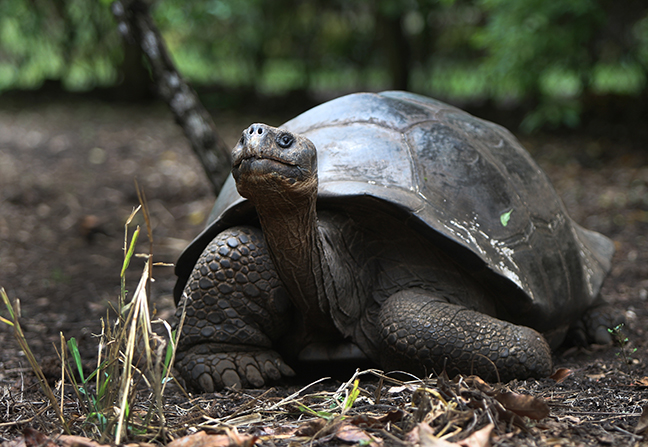
The Galápagos Tortoise (Galápagos Giant Tortoise) is the largest living species of tortoise, weighing up to 920 pounds. It is one of the longest-lived vertebrates with lifespans in the wild of more than 100 years.
Tortoise numbers declined from more than 250,000 in the 16th century to a low of around 3,000 in the 1970s due to overexploitation for meat and oil, habitat destruction for farming and the introduction of non-native animals to the islands. The extinction of most giant tortoise lineages is thought to have been caused by human predation and of the 15 known subspecies of Galapagos Tortoises, only 11 survive. Recent conservation efforts have resulted in thousands of captive-bred juveniles being released onto their ancestral home islands, and the total number of the species is now estimated at close to 20,000. (1/2)
©Rich Beckman

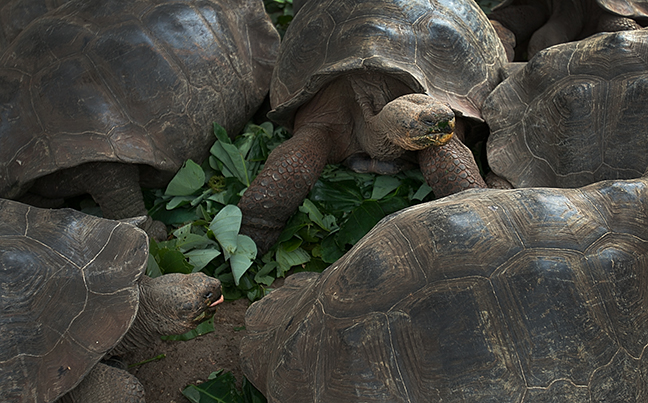
The Galápagos Tortoise (Galápagos Giant Tortoise) is the largest living species of tortoise, weighing up to 920 pounds. It is one of the longest-lived vertebrates with lifespans in the wild of more than 100 years.
Tortoise numbers declined from more than 250,000 in the 16th century to a low of around 3,000 in the 1970s due to overexploitation for meat and oil, habitat destruction for farming and the introduction of non-native animals to the islands. The extinction of most giant tortoise lineages is thought to have been caused by human predation and of the 15 known subspecies of Galapagos Tortoises, only 11 survive. Recent conservation efforts have resulted in thousands of captive-bred juveniles being released onto their ancestral home islands, and the total number of the species is now estimated at close to 20,000. (2/2)
©Rich Beckman

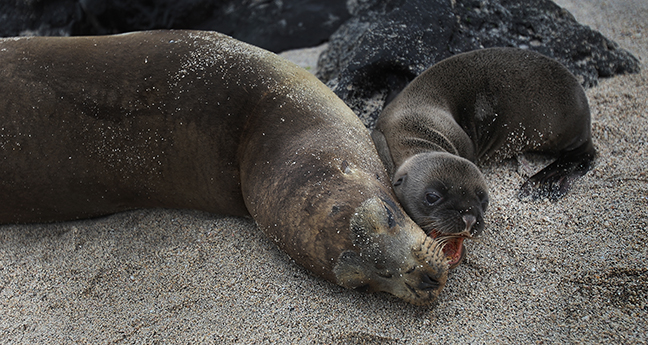
Galapagos Sea Lions are the largest and most often seen animal in the Galapagos with full-grown males weighing up to 550 pounds. They are often found sprawled on docks, benches, beaches, rocky shorelines and occasionally even sunning on boats throughout the islands. They eat mainly fish (sardines) that they catch on extended foraging trips. When on land, they congregate in harems, a group of females with one dominant male bull, or in bachelor colonies. (1/3)
©Rich Beckman

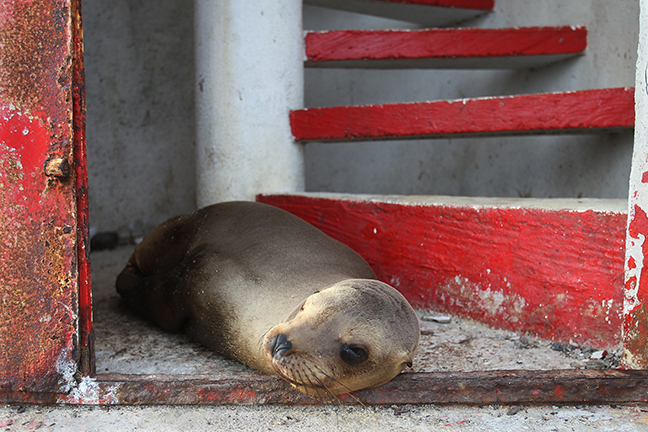
Galapagos Sea Lions are the largest and most often seen animal in the Galapagos with full-grown males weighing up to 550 pounds. They are often found sprawled on docks, benches, beaches, rocky shorelines and occasionally even sunning on boats throughout the islands. They eat mainly fish (sardines) that they catch on extended foraging trips. When on land, they congregate in harems, a group of females with one dominant male bull, or in bachelor colonies. (2/3)
©Rich Beckman

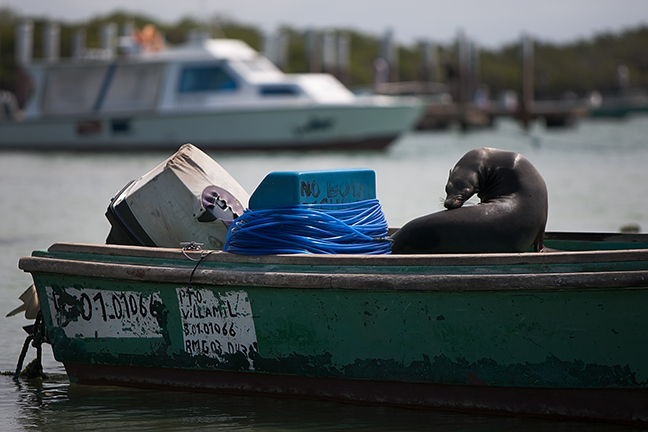
Galapagos Sea Lions are the largest and most often seen animal in the Galapagos with full-grown males weighing up to 550 pounds. They are often found sprawled on docks, benches, beaches, rocky shorelines and occasionally even sunning on boats throughout the islands. They eat mainly fish (sardines) that they catch on extended foraging trips. When on land, they congregate in harems, a group of females with one dominant male bull, or in bachelor colonies. (3/3)
©Rich Beckman

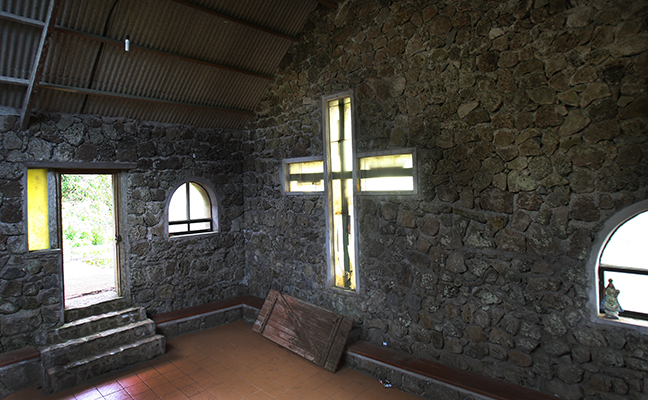
On San Cristóbal, the fifth largest and easternmost island of the Galapagos, El Junco, a small lake located near the top of the island, is the only source of permanent fresh water in the islands. Along the trail to El Junco there is a stone stairway leading to an abandoned multi-level church or shrine that still retains numerous religious icons from an unknown past. (1/3)
©Rich Beckman

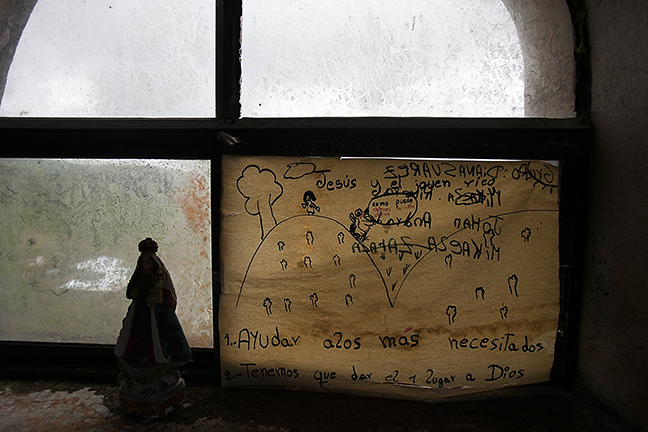
On San Cristóbal, the fifth largest and easternmost island of the Galapagos, El Junco, a small lake located near the top of the island, is the only source of permanent fresh water in the islands. Along the trail to El Junco there is a stone stairway leading to an abandoned multi-level church or shrine that still retains numerous religious icons from an unknown past. (2/3)
©Rich Beckman

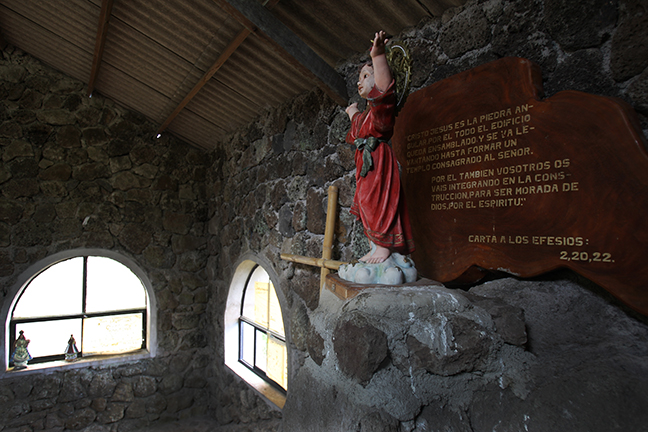
On San Cristóbal, the fifth largest and easternmost island of the Galapagos, El Junco, a small lake located near the top of the island, is the only source of permanent fresh water in the islands. Along the trail to El Junco there is a stone stairway leading to an abandoned multi-level church or shrine that still retains numerous religious icons from an unknown past. (3/3)
©Rich Beckman


Marine Iguanas are only found in the Galapagos Islands and are the world’s only sea-going lizard. They forage in the sea where they feed exclusively on underwater algae and seaweed and can dive more than 30 feet. They do not have the ability to thermoregulate and can lose up to ten degrees of body temperature while in the ocean. Their long, sharp claws are used for clinging to rocks underwater in heavy currents and on land. The young are black, while adults range from red and black, to black, green, red and grey, depending which island they live on. According to a study in Nature magazine, in times of El Niño-induced famine, marine iguanas don’t just become thinner, they also get shorter and then regrow when food becomes plentiful again. (1/2)
©Rich Beckman


Marine Iguanas are only found in the Galapagos Islands and are the world’s only sea-going lizard. They forage in the sea where they feed exclusively on underwater algae and seaweed and can dive more than 30 feet. They do not have the ability to thermoregulate and can lose up to ten degrees of body temperature while in the ocean. Their long, sharp claws are used for clinging to rocks underwater in heavy currents and on land. The young are black, while adults range from red and black, to black, green, red and grey, depending which island they live on. According to a study in Nature magazine, in times of El Niño-induced famine, marine iguanas don’t just become thinner, they also get shorter and then regrow when food becomes plentiful again. (2/2)
©Rich Beckman

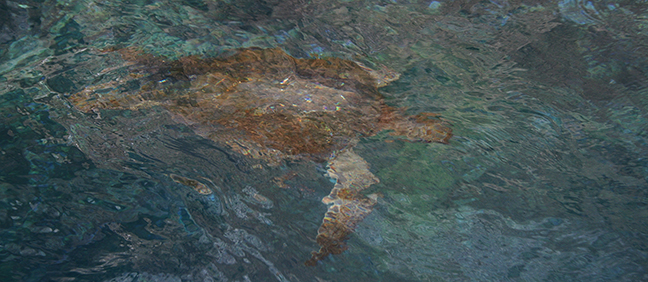
The Galápagos Green Sea Turtle is the only species of turtle that nests in the Galapagos Islands. The males never leave the ocean, but the females come ashore to nest and lay eggs on several of the islands. They are known to nest colonially and to return to the same nesting beach every time they reproduce, possibly their own hatching beach. The green sea turtle has the slowest growth rate of any species of sea turtle and is generally long-lived if left undisturbed. In the past, their eggs and meat were harvested in many areas and the meat is still considered a delicacy in some South American countries. They were placed on the IUCN Red List of Threatened Species in the mid 1980s and have remained under protection since.
©Rich Beckman

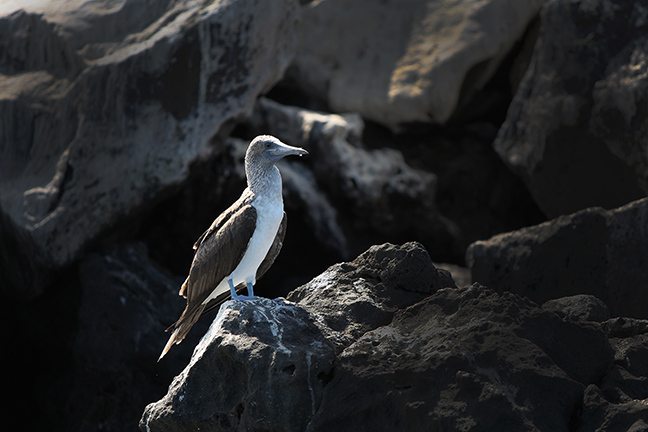
The Galapagos Island's population includes about half of all breeding pairs of Blue-footed Boobies. The blue color of their webbed feet comes from carotenoid pigments obtained from their diet of fresh fish. Their blue feet indicate the current age and health of a booby and females tend to mate with younger males with brighter feet, who have higher fertility and increased ability to provide paternal care. Boobies only need land to breed and rear young, which they do on bare ground along the rocky coasts of the eastern Pacific. They feed by plunge diving, often from great heights, into schools of fish and then can swim underwater in pursuit of prey. They also catch flying fish in the air. (1/2)
©Rich Beckman

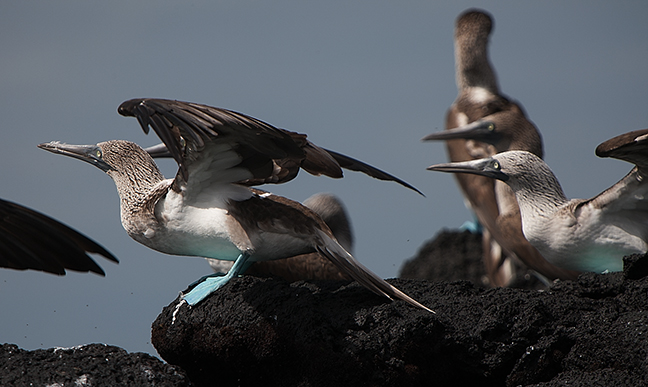
The Galapagos Island's population includes about half of all breeding pairs of Blue-footed Boobies. The blue color of their webbed feet comes from carotenoid pigments obtained from their diet of fresh fish. Their blue feet indicate the current age and health of a booby and females tend to mate with younger males with brighter feet, who have higher fertility and increased ability to provide paternal care. Boobies only need land to breed and rear young, which they do on bare ground along the rocky coasts of the eastern Pacific. They feed by plunge diving, often from great heights, into schools of fish and then can swim underwater in pursuit of prey. They also catch flying fish in the air. (2/2)
©Rich Beckman

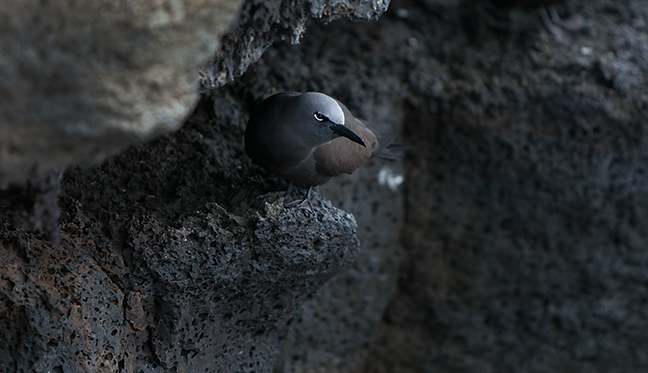
The Brown Noddy is a common seabird in the tern family and the largest of the noddies. They actually nod at each other during courtship rituals. They are colonial, most often nesting on cliffs or in short trees or shrubs at elevation. Brown Noddies primarily feed by plunge diving over schools of large predatory fish that drive small fry to the surface. A group of noddies is known as an affirmation, niddle or sleepiness of noddies.
©Rich Beckman

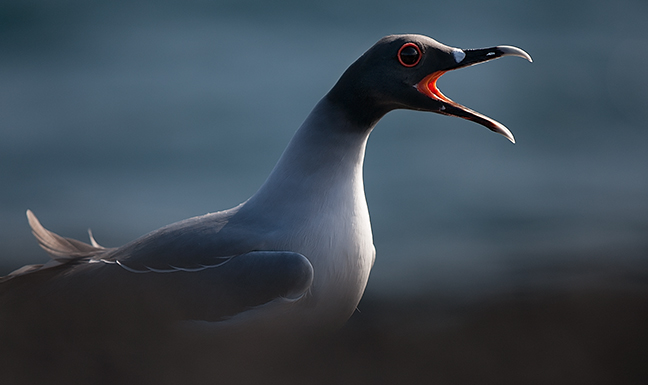
The Swallow Tailed Gull is the only fully nocturnal gull and seabird in the world, preying on squid and small fish that surface at night to feed on plankton. They spend most of their lives flying and hunting over the open oceans and have large eyes specifically adapted for hunting at night. They are endemic to the Galapagos Islands and when not breeding are totally pelagic, migrating eastward to the coasts of Ecuador and Peru.
©Rich Beckman

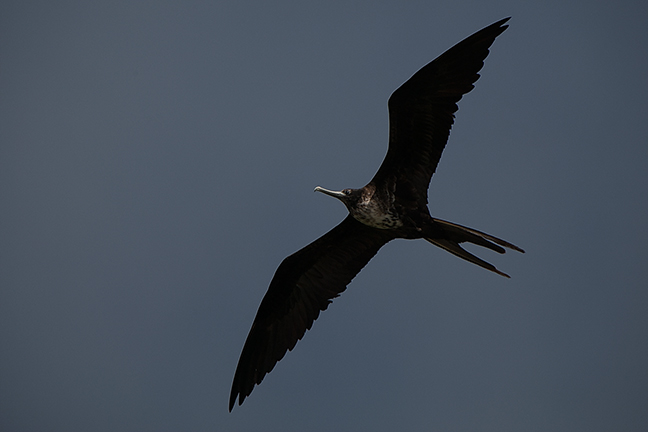
The Magnificent Frigatebird it is the largest species of frigatebird and there is some evidence that the Galapagos population may be its own genetically distinct species. Frigatebirds feed on fish taken in flight from the ocean's surface and sometimes indulge in kleptoparasitism, the practice of harassing other birds to force them to regurgitate their food. In addition to stealing food from boobies and one another, they also steal nesting materials. Frigatebirds do not usually breed every year as it takes almost a year to rear a chick. Juveniles as big as their parents can be seen waiting to be fed.
©Rich Beckman